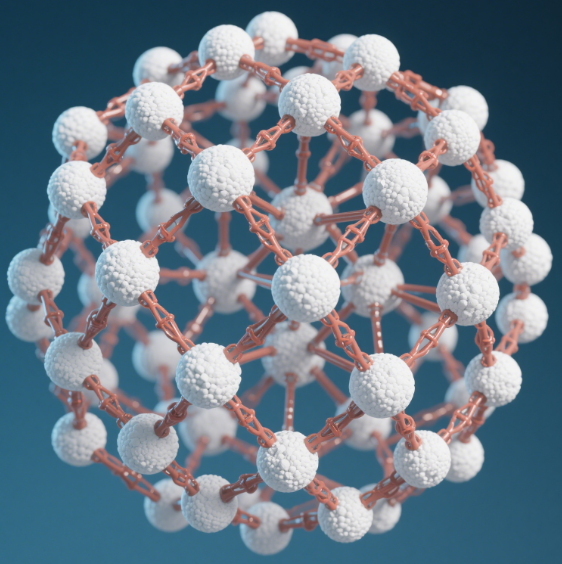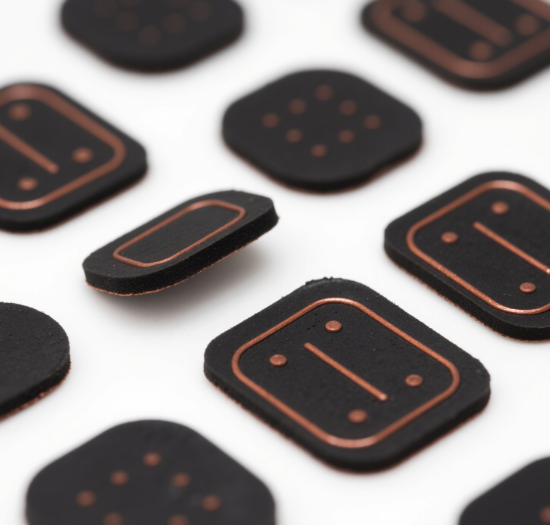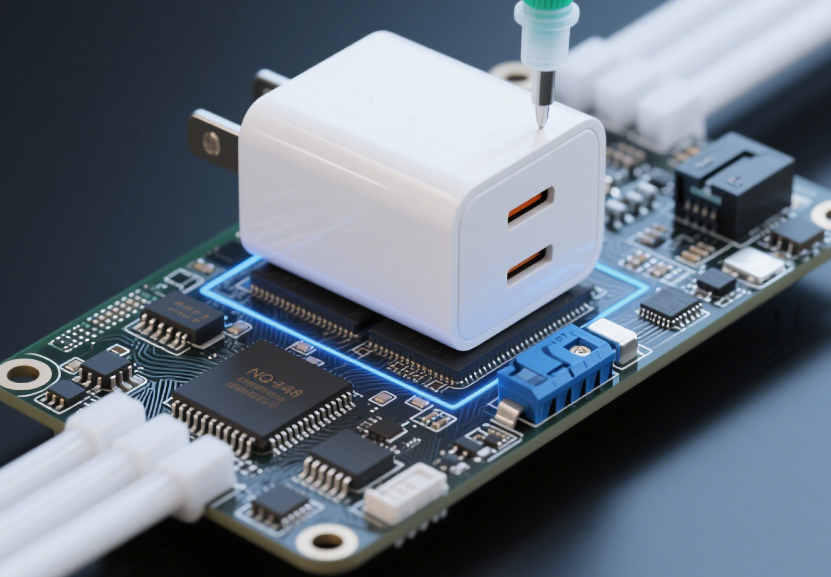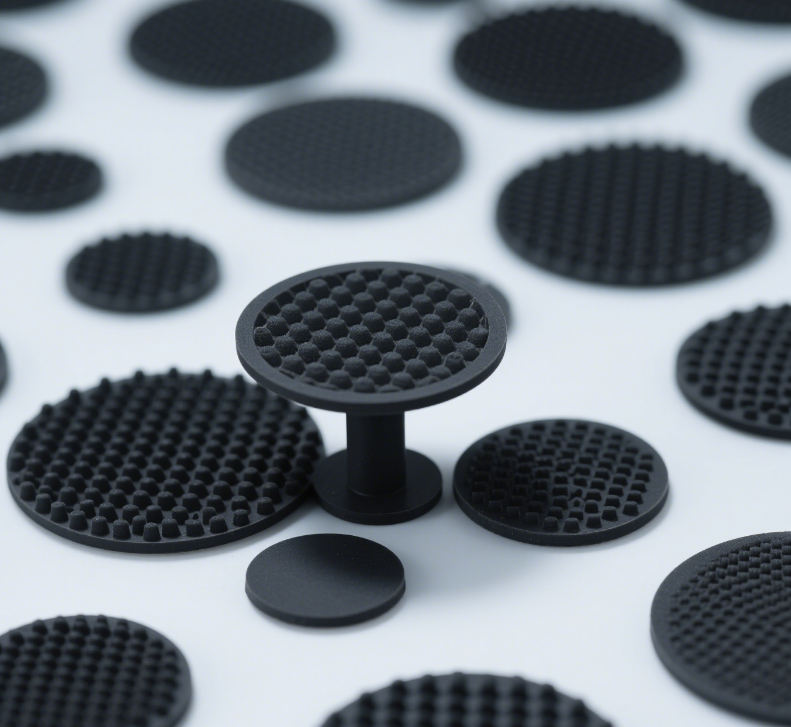Thermal Conductive Silicone Pad: Boron Nitride and Spherical Aluminum Oxide Empower the High-Efficiency Thermal Bridge between MOS Transistors and Radiators
In the technological wave of continuous miniaturization of electronic devices and increase in power density, the thermal management of power devices has become a key bottleneck restricting the stability of the system. As the core interface material connecting MOS transistors and radiators, thermal conductive silicone pads are achieving a revolutionary improvement in heat transfer efficiency through innovative breakthroughs in nano-filler technology. This article will deeply analyze how high-performance thermal conductive silicone pads with boron nitride (BN) and spherical aluminum oxide (Al₂O₃) as composite fillers build an efficient heat conduction bridge.
- Core Challenges of Power Device Heat Dissipation
As the core power device of switching power supplies, inverters and other equipment, if the Joule heat generated during the operation of the MOS transistor cannot be timely dissipated, it will lead to an increase in the junction temperature, causing the device performance to decline or even fail. Traditional heat dissipation solutions rely on the physical contact of metal radiators, but the air layer at the interface (with a thermal resistance of 10-50 K·cm²/W) has become the main obstacle to heat transfer. Thermal conductive silicone pads can fill the interface gaps with their compressibility, and their thermal resistance can be reduced to 0.1-1 K·cm²/W. However, the optimization of the filler formulation is still the core breakthrough point for improving thermal conductivity.
(1) Formation Mechanism of Interface Thermal Resistance
Microscopic roughness: Even a polished surface still has micron-level irregularities (Ra = 1-5μm), forming air entrapment areas.
Material contact thermal resistance: The solid-solid contact area only accounts for 1-5% of the apparent area.
Phonon scattering at the interface: The matching degree of lattice vibrations of different materials affects the heat flow transfer.
- Synergistic Enhancement Principle of Nano Composite Fillers
(1) Boron Nitride: A Nano Bridge for Anisotropic Heat Conduction
As a material with a hexagonal crystal system and layered structure, boron nitride has unique thermal conductivity characteristics:
In-plane thermal conductivity: 400-600 W/(m·K) (nearly one-third of that of graphene)
Interlayer thermal conductivity: 5-10 W/(m·K)
Insulation characteristics: Breakdown voltage > 30 kV/mm
Chemical stability: Resistant to high temperatures of 200℃ and corrosion by acids and alkalis
In the silicone matrix, BN nanosheets form a two-dimensional thermal conduction network through “face-to-face” lapping, constructing an efficient heat flow channel along the interface direction. When the filling amount reaches 20 vol%, the in-plane thermal conductivity of the composite material can be increased by 300%, while the interlayer thermal resistance only increases by 50%, forming a unique structure of “horizontal heat conduction highway and vertical insulation barrier”.
(2) Spherical Aluminum Oxide: The Cornerstone of Building a Three-Dimensional Thermal Conduction Network
Compared with traditional flaky aluminum oxide, spherical particles have significant advantages:
Isometric crystal form: High packing density (theoretical packing rate of 74%), reducing the interface thermal resistance
Smooth surface: Friction coefficient < 0.3, improving the fluidity of the silicone matrix
Particle size gradient distribution: Filling with a grading of 5-50μm, forming a composite structure of “nano-bridging and micro-support”
When compounded with BN nanosheets at a volume ratio of 3:1, spherical Al₂O₃ can effectively fill the gaps between BN layers, constructing a heat conduction path in the vertical direction, increasing the overall thermal conductivity from 1.2 W/(m·K) of a single BN system to 3.5 W/(m·K), while maintaining good compressibility with a Shore hardness of A50-60.
III. Key Performance Parameters and Test Data
(1) Thermal Performance
Test Item Measured Value Industry Standard Advantage Analysis
Thermal Conductivity 3.8 W/(m·K) ≥2.0 More than twice that of conventional silicone pads
Thermal Resistance (1mm) 0.35 K·cm²/W ≤0.5 Meets the heat dissipation requirements of a power density of 100W/cm²
Long-term Operating Temperature -40~200℃ -20~150℃ Adapts to a wide temperature range of industrial environments
(2) Mechanical and Reliability
Compression Deformation: 20%-30% (under a pressure of 10kPa), perfectly suitable for gaps of 0.1-1mm
Volume Resistivity: >10^14 Ω·cm, ensuring insulation safety in high-voltage environments
Aging Resistance Test: In an environment of 85℃/85% RH for 1000 hours, the thermal resistance change < 5%
- Analysis of Diverse Application Scenarios
(1) Consumer Electronics Field
In the power management module of a laptop computer, this silicone pad can reduce the junction temperature of the MOS transistor by 15℃. Combined with an aluminum radiator, it enables a fanless design. A typical application case: The surface temperature of the CPU area of a 14-inch thin and light laptop can be controlled below 45℃ when it is running at full load.
(2) New Energy Vehicles
It is used to connect the IGBT module of the vehicle-mounted inverter and the water cooling plate. The characteristic of resistance to electrolyte corrosion (with a service life of > 5000 hours in an environment with a pH of 10) ensures reliability in high-voltage environments. The actual measurement shows that it can increase the motor efficiency by 0.8% and the driving range by 3%.
(3) Industrial Control
In the heat dissipation of the IGBT module of a high-temperature welding machine, the characteristic of stable operation at 200℃ for a long time avoids the problem of dryness and failure of traditional silicone grease. The maintenance cycle is extended from 3 months to 2 years, significantly reducing the downtime cost.
- Future Technological Development Directions
Graphene Modification: Introducing 0.5 vol% of graphene oxide into the BN/Al₂O₃ system can increase the thermal conductivity to 4.2 W/(m·K), and EMC compatibility tests are being carried out.
Self-healing Technology: Developing a liquid metal toughening phase encapsulated in microcapsules to achieve autonomous repair of interface cracks (repair efficiency > 80%).
Intelligent Sensing Integration: Embedding a carbon nanotube temperature-sensitive network to monitor the change of interface thermal resistance in real time and provide early warning of the risk of heat dissipation failure.
Conclusion
The thermal conductive silicone pad with boron nitride and spherical aluminum oxide as the core fillers has successfully broken through the performance ceiling of traditional interface materials through nano-scale interface design and the construction of a multi-dimensional thermal conduction network. With the popularization of 5G power devices and third-generation semiconductor materials, such high-performance thermal management materials will become a key enabling technology to support the efficient and reliable operation of power electronic systems. In the future, it is necessary to further deepen the research in aspects such as filler dispersion process, interface bonding strength, and environmental adaptability, and promote the collaborative optimized design of thermal management materials and device structures.


















